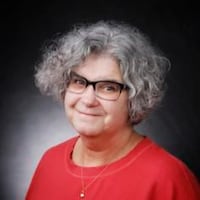Was the baby alive when she was born?
This is the key point on several of the charges.
The prosecution says Richardson gave birth to a live baby and killed her.
The defense claims the baby was stillborn and Richardson did not kill her.
Both sides agree Richardson buried the baby. The prosecution claims she did so to conceal her crime and preserve her life as it was before her unwanted pregnancy. The defense claims she was a scared 18-year-old who was so worried about how her family and friends would react that she buried the child.
TRIAL COVERAGE
• Day 1 | Day 2 | Day 3 | Day 4 | Day 5 | Day 6 | Day 7
• WATCH all videos from Brooke Skylar Richardson trial
• Timeline: Events in the Carlisle buried baby case
• Quotes: Key things said during the Richardson trial
• The 28 people who testified over 6 days
• What was said in closing arguments?
Did Richardson burn the baby?
A forensic expert first told investigators that the baby’s bones were charred when they were discovered in Richardson’s backyard in July 2017, more than two months after Richardson gave birth.
That expert, though, later recanted that opinion.
The prosecution continues to contend Richardson burned the baby, in part using statements she made to police in a second interrogation that happened on July 20, 2017. The defense claims those admissions were forced by investigators who were pressuring Richardson because of what they had been told by the expert.
The prosecution says that the expert was hired by the coroner’s office, not investigators, and that the defense team was informed when that opinion changed.
The defense claims investigators were overzealous in their pursuit and interrogation of Richardson because of their untrue belief the remains were charred.
Did Richardson make false admissions to police?
In the second interrogation with police, Richardson changes her story multiple times about whether the baby might have been alive when she was born, if the baby gurgled, if Richardson might have squeezed a live baby too hard and if Richardson tried to cremate the baby.
The defense called a psychologist who said that Richardson has a mental disorder that causes her to be submissive to authority, which they say means Richardson would have said things to please the investigators.
The defense also called a professor who studies interrogations and false confessions, who said the police methods and what they were saying to Richardson were problematic and could have led to false statements.
The prosecution claims those admissions were made because Richardson finally told the truth.
Credit: DaytonDailyNews
Why did Richardson hide her pregnancy and not tell anyone about the birth?
The prosecution claims Richardson did so because she knew she wasn’t going to keep the unwanted baby.
The defense claims Richardson thought she had up to 10 weeks before the birth after she learned of the pregnancy so she was planning to tell her family, but the birth happened only days after she learned she was pregnant.
Prosecutors showed text messages to Richardson’s mother and then-boyfriend that were sent hours after the birth in which she describes being very happy and not mentioning the birth or baby’s death, which they say show Richardson would do anything to keep her life the way it was. They also showed internet searches Richardson performed regarding how to “get rid of” a baby.
The defense has said Richardson wanted to continue to conceal the pregnancy and birth because she was scared, not because she was happy.
How did her relationship with her family affect the case?
The prosecution used interrogation video during times Richardson’s family was in the room with her and text messages between Richardson and her mother to claim that Richardson’s relationship with her family led to her deciding she would not keep her baby when she learned she was pregnant.
The defense says she planned to tell her family because she thought she had more time before the birth, and her father, Scott, testified the family would have been shocked but would have accepted the baby into the family.
There wasn’t definitive cause of death for the baby
Experts from both sides testified that the cause of death for the baby could not be determined because of the state of the remains that were buried from May 7, 2017, to late July.
The prosecution several times in questioning witnesses called out that it was Richardson who buried the baby and concealed it, which made that determination impossible. It underlined to the jury that this is a circumstantial case, with many pieces of evidence that point to their claims, instead of direct evidence case.
The doctor who performed the autopsy on the remains said the cause of death was “homicidal violence” and added she used evidence including Richardson’s statements to police to make that determination.
A defense witness said his opinion is that the baby was stillborn, based on evidence including measurements of the remains performed by other doctors.
About the Author
